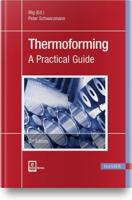Publisher's Synopsis
Surfactants (surface-active agents - materials which alter the surface properties of water and other liquids to produce foams, emulsions and other effects) are widely used in many industries, but their properties are not as widely understood as they might be. This is partly because the physical chemistry behind these effects is not always available.;This book explains the structure, preparations and properties of the common surfactant types (anionic, nonionic, cationic and amphoteric). It goes on to show why some surfactants are easily thickened (and thinned) and how hydrotopes work; why some are foaming agents, others are wetting agents and yet others are emulsifiers; what is required for low-foaming products and how defoaming works; the difference between a solubilizer and a coupler and what a microemulsion is; the interactions between different surfactants and how use can be made of such effects; the application of surfactants in personal care products, in laundry and dishwashing detergents, in hard surface cleaners and other uses, and many more important facts about surfactants. The book is complemented by a discussion of toxicological and environmental considerations and an encyclopaedic list of surfactant types.









